May 22
How to Grill Steaks on a Meadow Creek SQ36 With Charcoal Grill Pan
0 comments
May 22
0 comments
Are you hungry for a big juicy steak cooked over a wood fire? In this story, I'm grilling porterhouse steaks on my SQ36 offset smoker with the optional grilling pan. I also share a step-by-step method to help beginners grill a steak with confidence.
Here's a peek at what we're talking about... are you hungry yet?
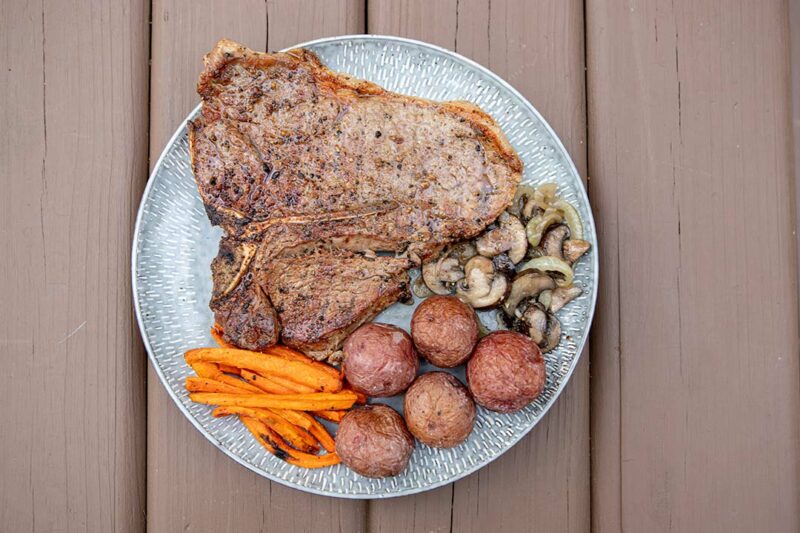
If you're a beginner, my goal is to give you the confidence you need to grill a great steak. It's important to understand the following keys to accomplishing this, because for example, if you are too tight to buy a good quality steak, it doesn't matter how good you are at cooking, it still won't be a great steak.
What about grill marks? Personally, I don't need grill marks on my beef steak to be happy, but if you are inclined to have grill marks, get yourself a set of GrillGrates. These grates are the best way to get consistent grill marks, and they also have some other cool abilities.
Which beef steak should I buy? It really depends on what you want, your budget, the rest of your meal, etc. Here are some of my favorites:
How thick should the steak be? Butchers often put thinner steaks in the meat case, but it's really challenging to build a nice sear on the outside without overcooking the center on a thin steak. Always go with a thick-cut steak at least 1" thick. 1-1/2" is better or even 2" thick, depending on how you wish to cook it.
For this recipe, I'm cooking 1" thick porterhouse steaks. Cost per steak is one consideration. The cost of these was about $15 each so adding another 1/2" in thickness would raise the cost per steak by 50%. Serving size is another thing to consider when choosing the size of steak. For example, a thicker cut T-bone or strip steak might be better for your guests unless you're just serving family or close friends and don't mind carving the steaks into smaller portions.
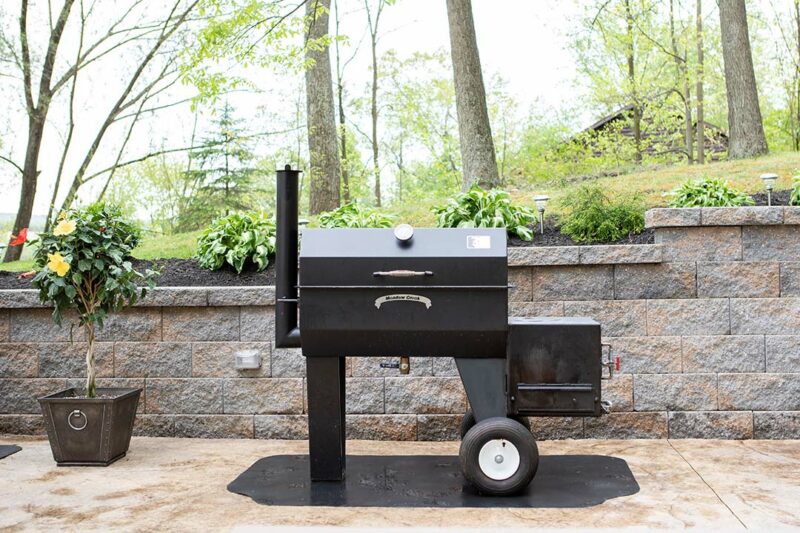
In this story, I'm grilling steaks with the SQ36, a best-selling offset smoker with the optional grilling pan. This model is perfect for someone who wants to invest in a wood-fired smoker that is fun to use and designed to hold up for more than a generation.
Read the basics of offset BBQ smokers here:
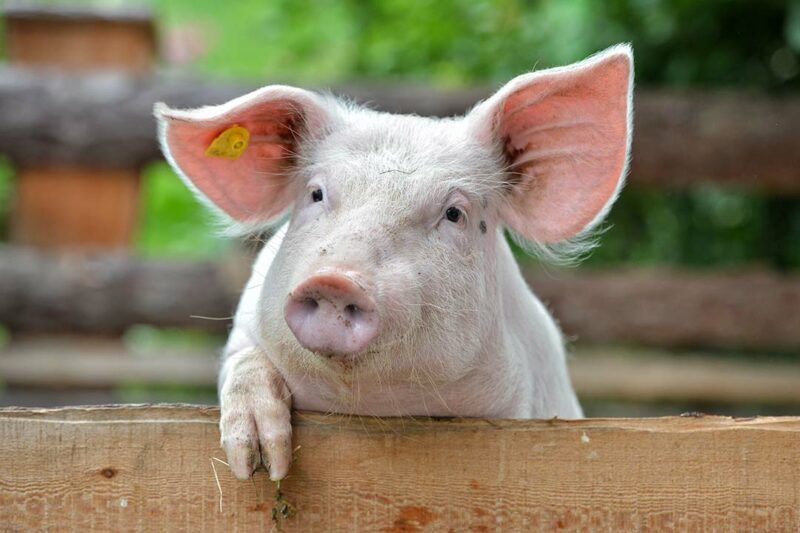
There are many right ways to grill a steak, and if you've been doing this for a while, you've probably developed your own methods for getting consistent results. It's also true that with experience it gets much easier to know what is happening with the meat and when it is done.
Here are the steps I'll cover below:
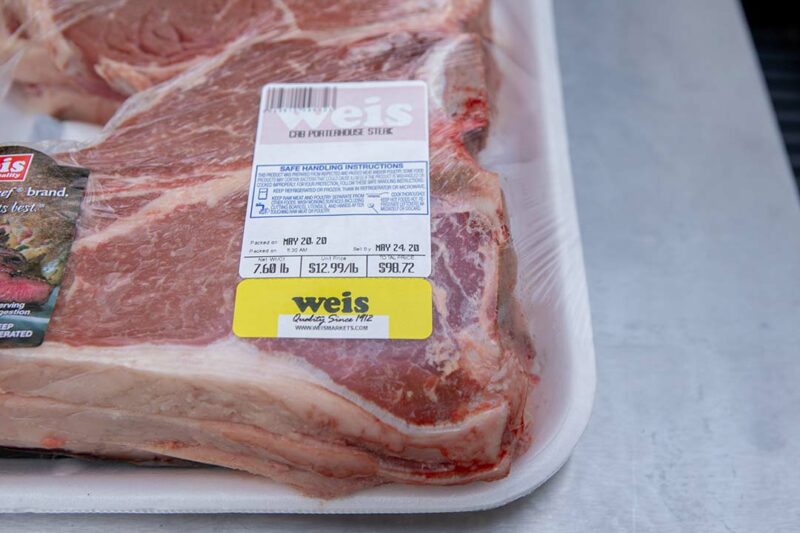
Here we have my porterhouse steaks unwrapped and ready to season. I'm using a moderate dusting of both Killer Hogs Steak Rub and Killer Hogs The AP Seasoning on each side.
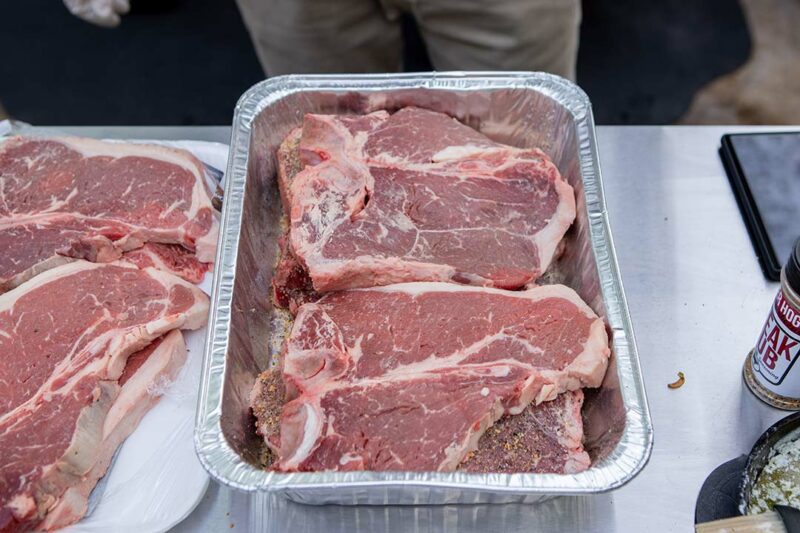
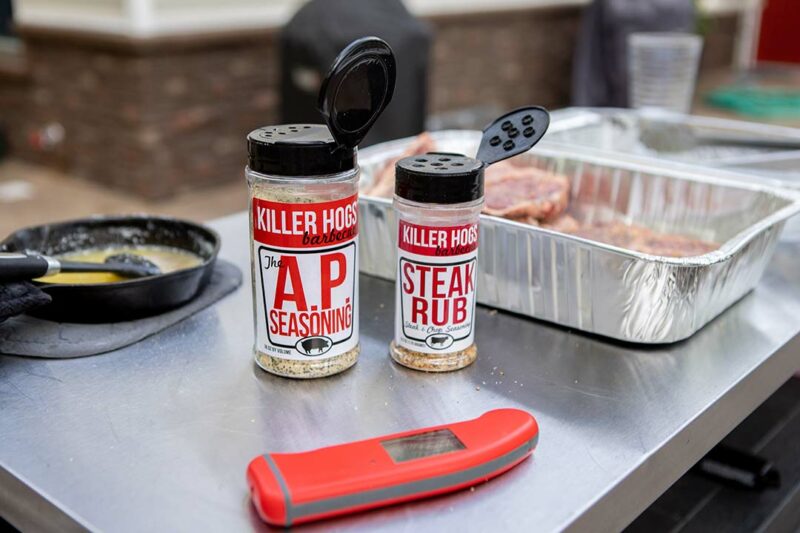
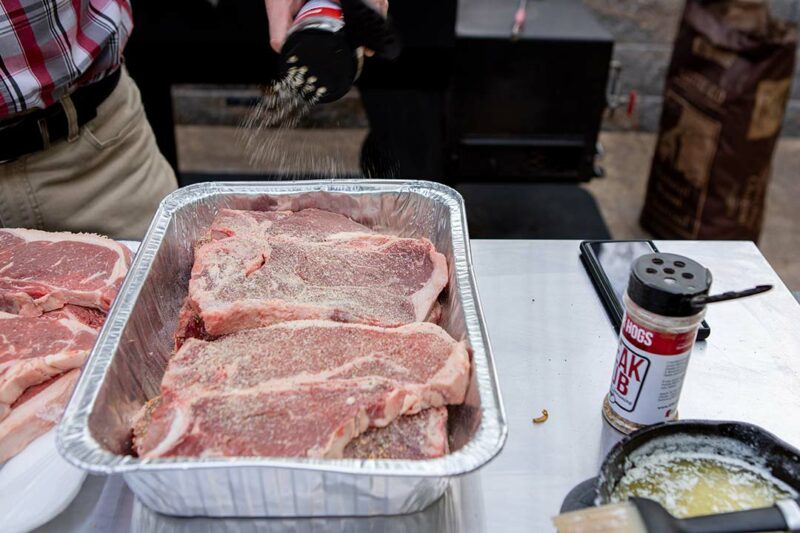
For this cook, I'm using Nature-Glo Lump Charcoal and the optional SQ36 grilling pan. Add enough charcoal to fill the pan to the top of the pan brackets on the end and to fill 3/4 of the pan surface.
I initially lit the lump with a propane torch and then fanned the fire with my BBQ Dragon fan to get it scorching hot QUICKLY. The fan makes it easy to get a lump charcoal fire going quickly, but if you don't have a propane torch or Dragon, give the fire plenty of fuel and air and you should be fine.
Note about the vents: The SQ36 comes with adjustable vents on each end designed to use when grilling with direct heat like this. My SQ36 is an older model and doesn't have these vents so I keep the lid open unless I need to control a flare-up. I opened the stack and firebox vents all the way, which will help a little, but this won't give it enough air for a hot steak fire. If you have the vents and need to close the lid while grilling steaks, open the vents all the way. If like me you don't have them, just keep the lid open.
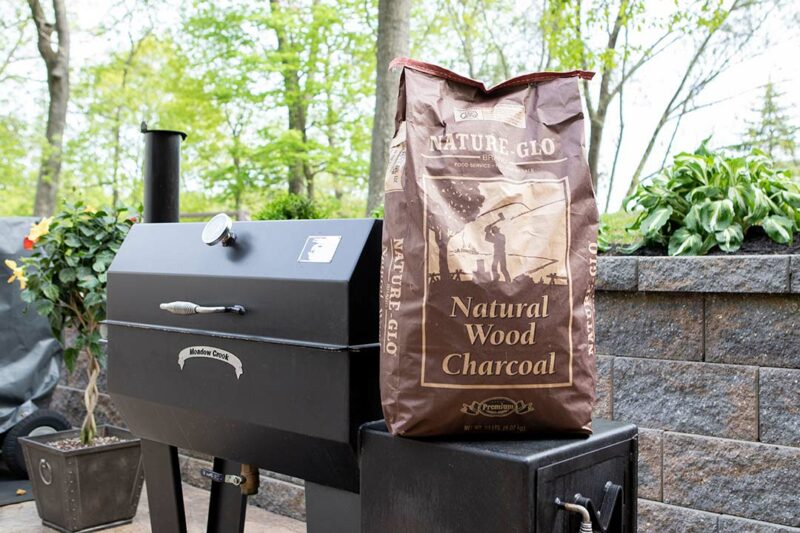
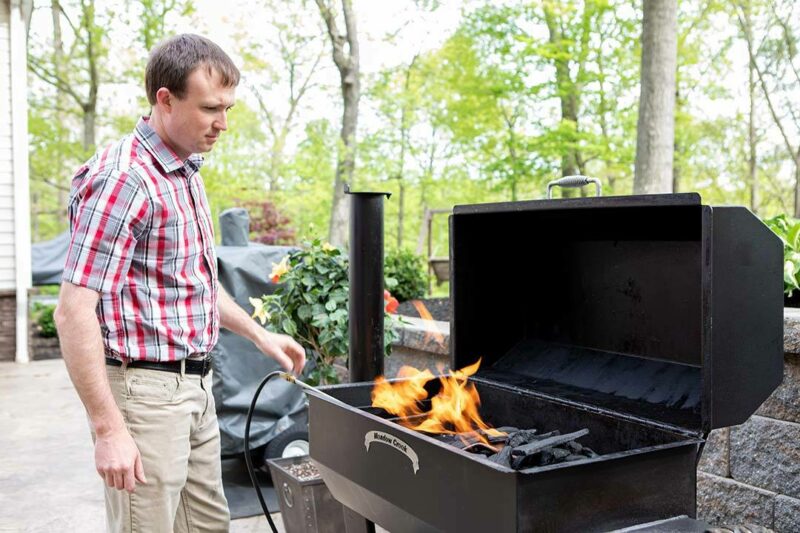
Lighting the charcoal with a propane torch
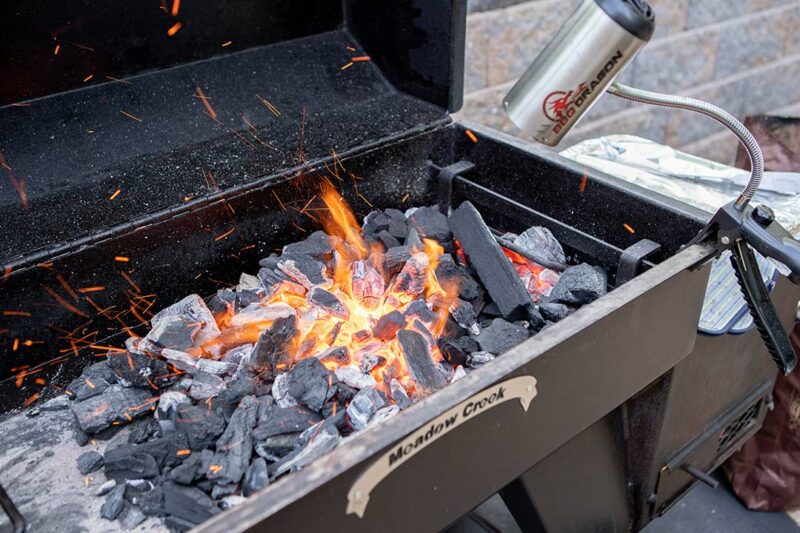
Getting the charcoal going with the BBQ Dragon fan. This thing means business!
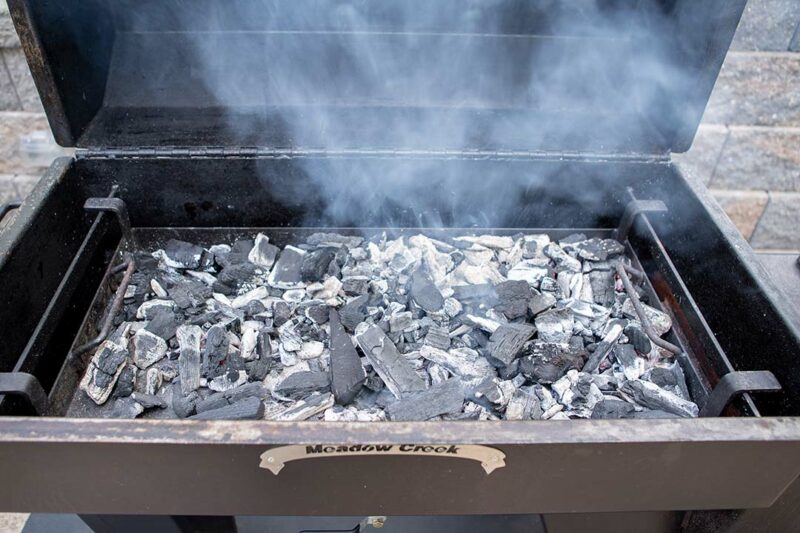
Once the coals are well lit, mix them and try to get an even heat across the right 2/3 of the pan. Arrange fewer coals in the remaining 1/3 of the pan. You will use this if you need a cooler place on the grill to finish a steak. The fire should be too hot to leave your hand at grate level for more than 3 seconds.
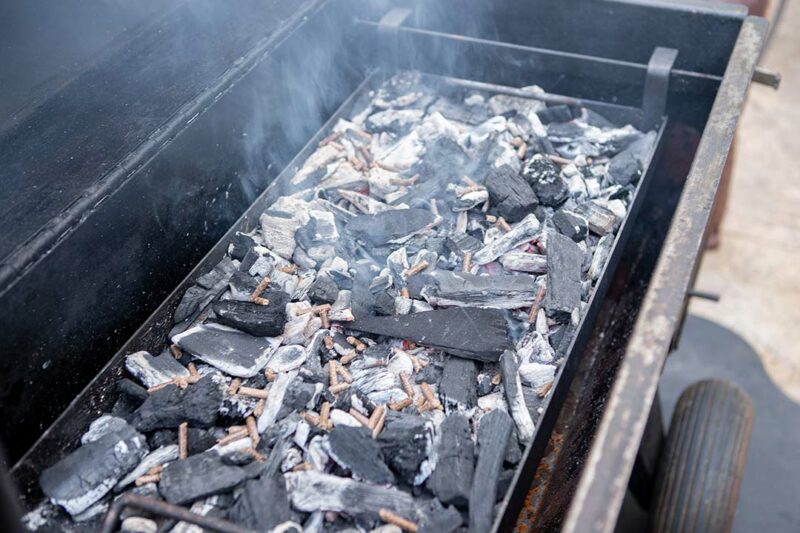
Throw in a handful of smoking pellets to get the smoke going.
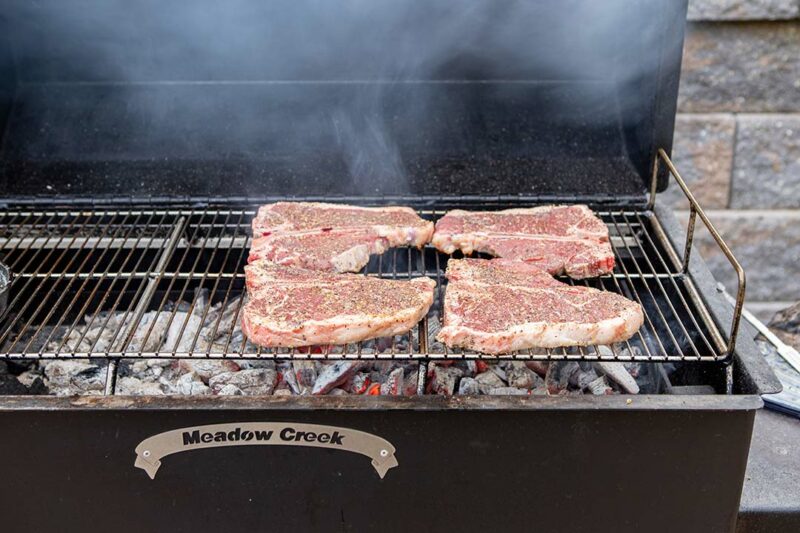
Place several steaks directly over the hottest part of the grill. If the fire flares up, be careful not to let the steaks char too much. You can close the lid for a little bit to calm the fire down or stir the coals to even out the heat.
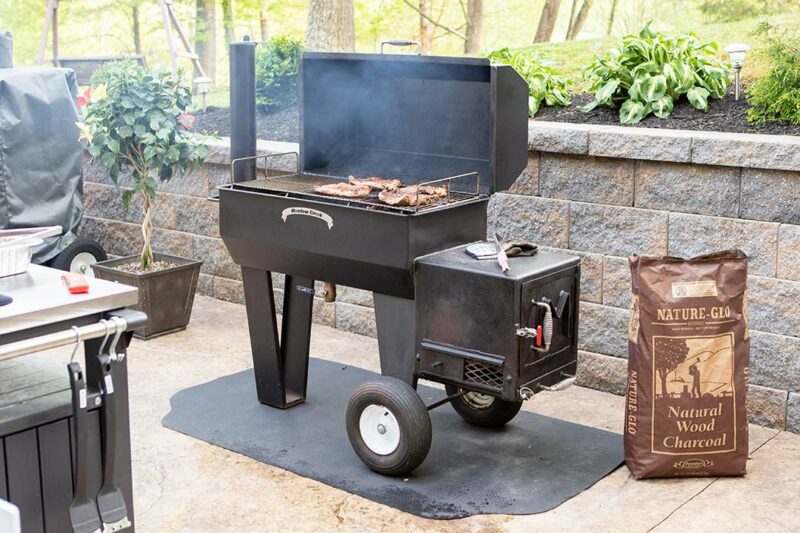
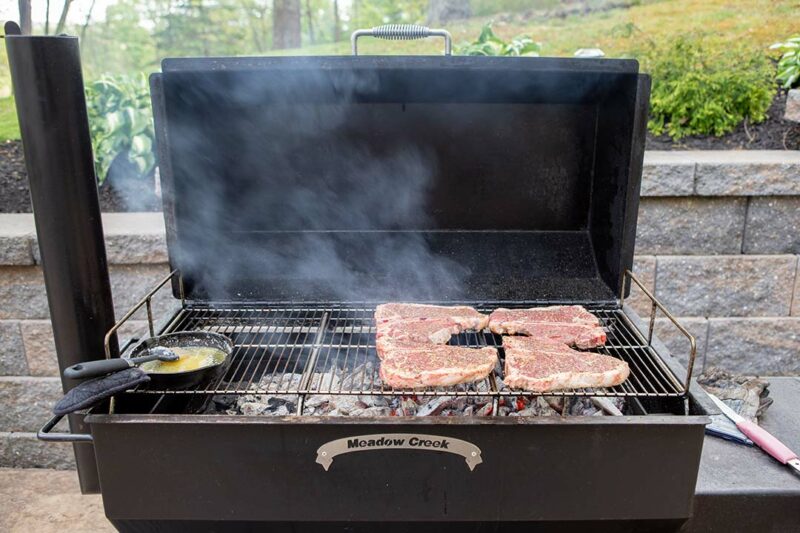
It's a bit of a guessing game for knowing when to flip them unless you have experience because of all the variables in the heat and size of the steak, etc, but don't cook them for more than 3–4 minutes on the first side. Flip them and cook the second side until the center of the steak reaches the doneness you are looking for.
I prefer medium rare, which is 130–135 degrees F, but here are some things to keep in mind:
In other words, cooking great steaks consistently, especially in batches, requires patience and practice. Don't get discouraged if they don't turn out perfectly. Learn what you can and apply your experience to the next batch.... most of all, enjoy the journey and have fun!
Butter Glaze: Before it is done, glaze the steaks with melted butter using a pastry brush. I had a small cast iron skillet containing a stick of melted butter on the cooler side of the grill so it was handy when I was ready for it. As the butter drips into the fire, it will flare up, giving the steak a really nice sear at the very end of the cook. Flip the steaks in the flames and remove them as soon as the surface is the color you want it.
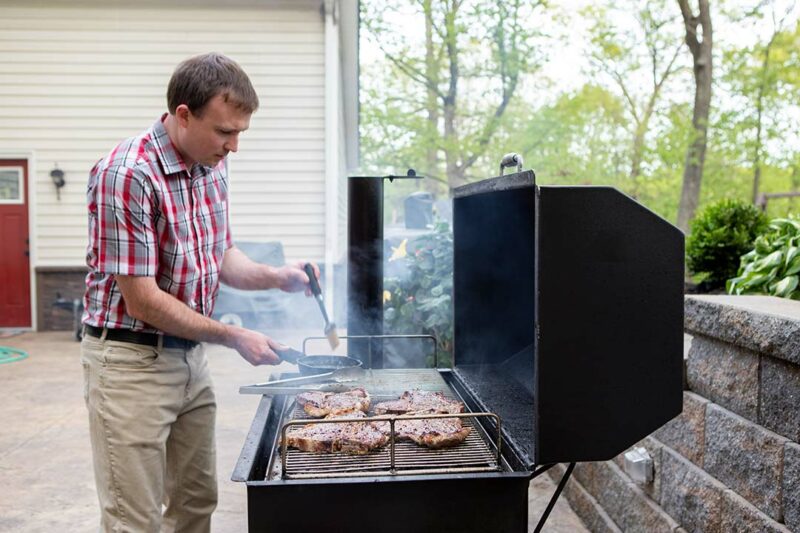
Brushing butter on the steaks
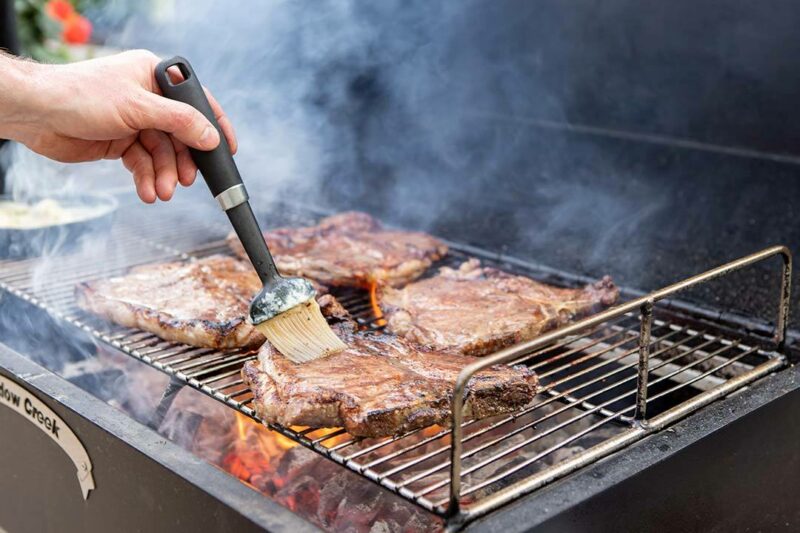
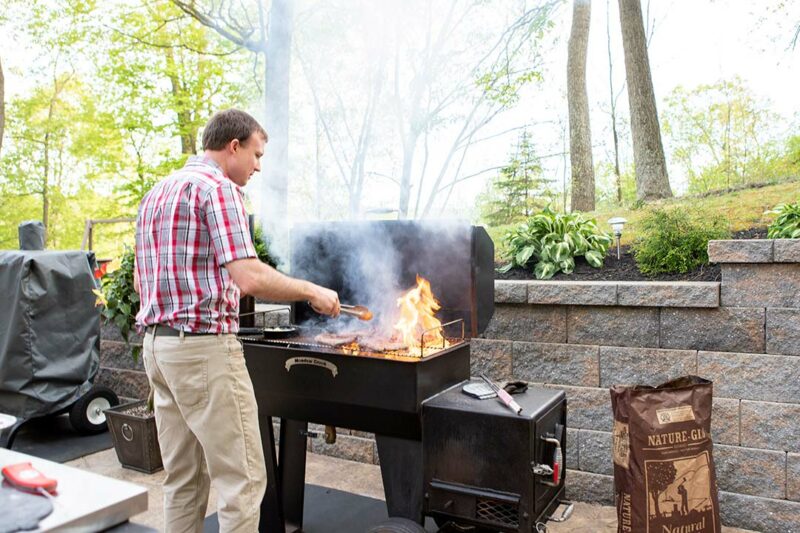
Final sear and ready to remove from the grill
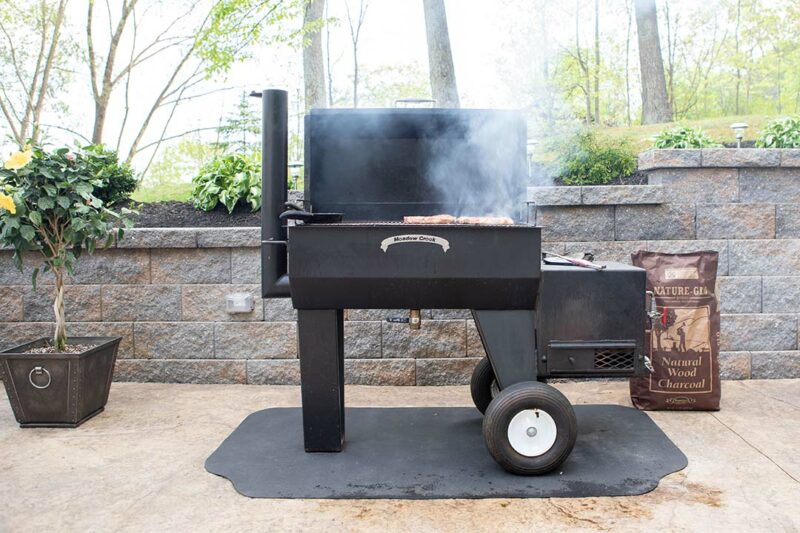
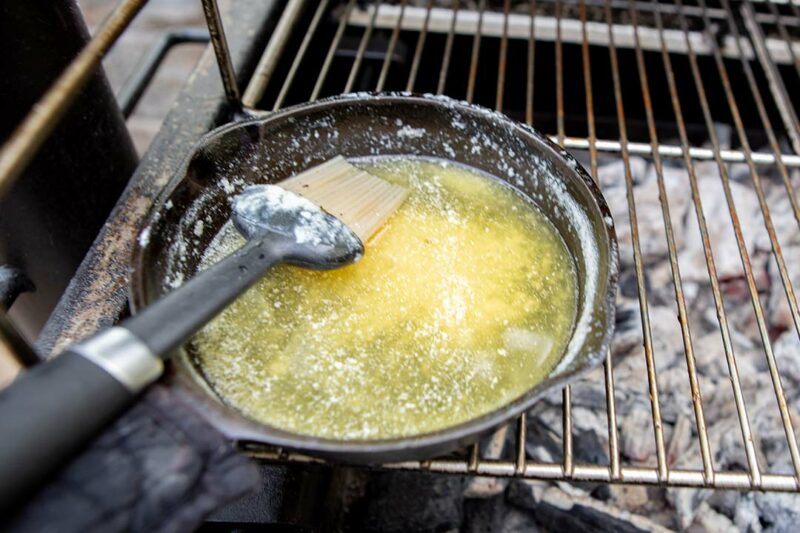
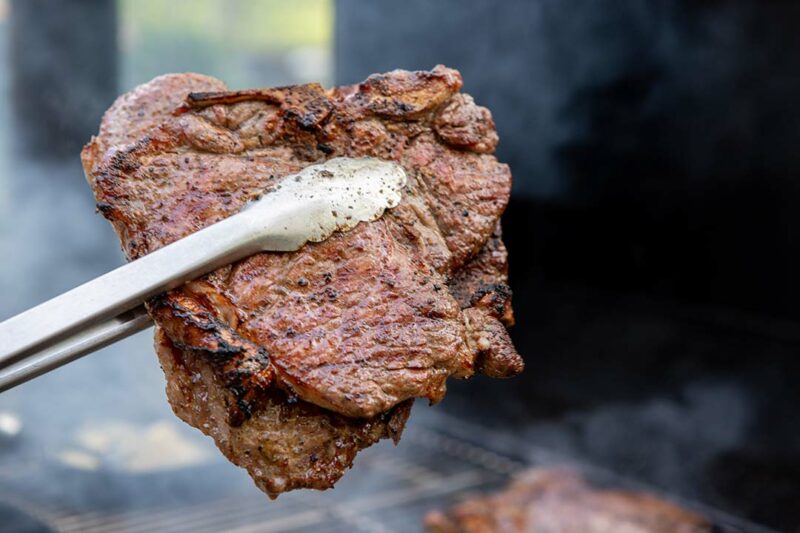
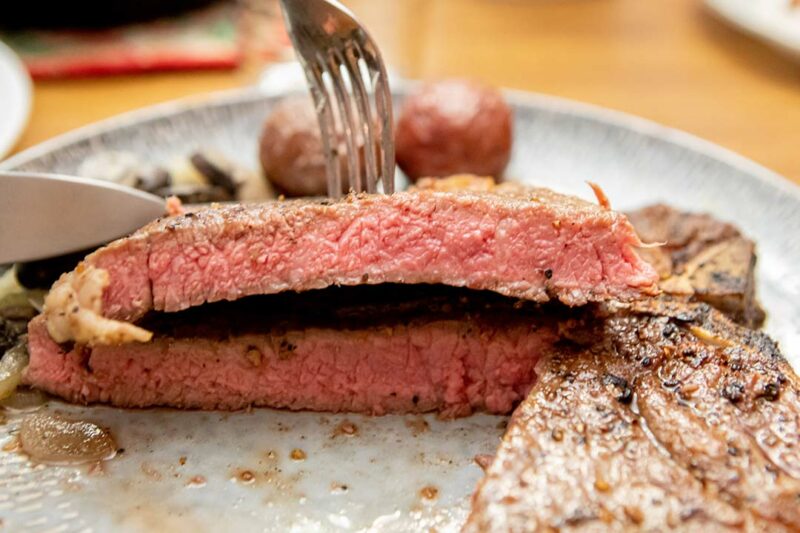
Not a bad looking steak!

My wife sauteed some mushroom and onion slices to serve with the steaks. We completed our family dinner with salt potatoes and roasted carrots.
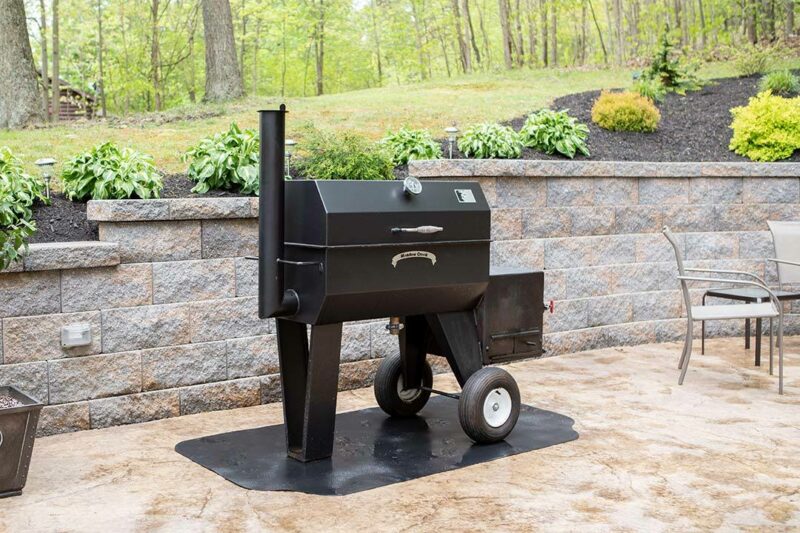
Are you in the market for a quality handmade offset smoker?
I've been cooking with the SQ36 for many years, mostly low and slow, and still love it. Adding the optional charcoal grilling pan makes this smoker even more attractive and useful. Click the button below to learn more about this smoker, and then scroll down on the page for links to some of the other cooks I've done on this smoker.
Tags
grilled steaks, sq36 smoker